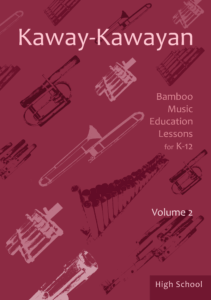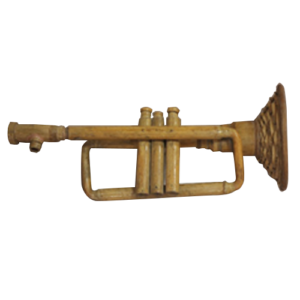Highschool Module
SITSIRITSIT REHEARSAL PLAN
Background
Description: Tagalog Folk Song
Arranger: Genaro Cesar Edilo Jr. – December 11, 2015

It is a Tagalog folk song that is also known as “Sitsiritsit, Alibangbang.” The lyrics describe a flirtatious woman who wishes that ants devour a store owner who refuses her credit. It also tells of a fisherman who offered to give a ride to a child to Manila and then to exchange said child for a doll or exchange the baby for shrimp paste (bagoong) when in Malabon, a known fishing village.
The origin of the song is unclear, but it is said that the song was first heard during the Spanish colonial period as the lyrics describe the ordinary life of thefolk during that time. The melody has the same tune to “Fly, Fly the Butterfly,” another folk song but in English version.
Lyrics
Sitsiritsit, alibangbang Salaginto’t salagubang. Ang babae sa lansangan
Kung gumiri’y parang tandang.
Santo Niño sa Pandacan Puto seco sa tindahan
Kung ayaw kang magpautang Uubusin ka ng langgam.
Mama, mama namamangka Pasakayin yaring bata Pagdating sa Maynila Ipagpalit ng manika.
Ale, aleng namamayong, Pasukubin yaring sanggol Pagdating sa Malabon, Ipagpalit ng bagoong.
A. Materials
Audio tracks – Scan QR code on the right
Sheet music – Sitsiritsit arrangement by Genaro Cesar Edilo Jr.
B. Guide to the Piece
The piece is in duple meter and in the key of G. The melody of the song in Part A is played by an angklung together with the accompaniment of the Guitar and Bumbong using G and D chords. On measure 10, the gabbang/ marimba plays a counter-melody to support the sound of the angklung until measure 17. InPart B (measure 17), the melody is transferred to the gabbang/ marimba while the angklung is at rest. On measure 25, the gabbang/marimba continues to play the melody while the angklung plays chordal accompaniment starting on measure 26 up to measure 33 in partnership with the accompaniment of the guitar and bumbong. On Part C (measure 33), the angklung plays the melody once more while the Marimba plays a counter-melody in two voices consistent with the harmony.
On measure 42, the melody is played alternately, twice by the gabbang/ marimba, with its second voice together with the angklung playing a chord to give a more rich and colorful sound.
The music ends with the melody played alternately by the angklung and the gabbang/marimba.
| Time Allotment | Material | Instrument | Measures | Objective | Activity | Assessment |
| 15
minutes |
angklung, gabbang/ marimba
bumbong |
Familiarize the skill in playing the angklung instrument using the notes in
G Scale. |
Warm-up: Play the G Scale and chords.
Play the notes of G scale. |
The teacher will assist and facilitate the students in doing the warm-up exercises checking for correct position and tone quality. | ||
| Practice lip vibration to produce sound. | ||||||
| 15
minutes |
Sitsiritsit
Melody: Introduction |
angklung | Pick up to m. 1–17 | Familiarize Rhythm: Syncopation and triplets | Observe dotted eight notes
to achieve execution of syncopations. |
Repeat to get familiar with the rhythmic pattern paying attention to rhythmic accuracy and consistent beat. |
| 20
minutes |
Melody: Introduction | guitar | m. 2–17 | Familiarize the notes in G and chords. | Play with rhythmic | Check for correct speed and rhythm. |
| precision. | ||||||
| Note: If not | ||||||
| executed | ||||||
| properly, have | ||||||
| them chant | ||||||
| the rhythm | ||||||
| first then | ||||||
| play on their | ||||||
| instrument |
| Time Allotment |
Material |
Instrument |
Measures |
Objective |
Activity |
Assessment |
| 15
minutes |
Melody: Introduction | Bumbong | m. 2–17 | Play the melody with mastery. | Play the notes indicated in the piece.
Repeat to get familiar with the melody and rhythmic pattern. |
Check for accurate position of the lips, blowing technique, and pitch. |
| 10
minutes |
Part B | gabbang/ marimba | Pick up to m. 17–25 | The students will read | The students may be asked to sight- | |
| and play | read to measure. | |||||
| the melody | mastery of their | |||||
| indicated in | part/s. | |||||
| the piece. The | ||||||
| teacher will | ||||||
| evaluate the | ||||||
| students if they | ||||||
| have a mastery | ||||||
| already. If not, | ||||||
| let them sight | ||||||
| read again | ||||||
| and play it | ||||||
| repeatedly for | ||||||
| them to master | ||||||
| the piece. | ||||||
| 15
minutes |
Part B | guitar | m. 17–58 | Play the rhythmic | The students will read and | Check for correct lip position, blowing |
| pattern and | play the notes | technique, rhythm, | ||||
| melody with | indicated in | and pitch. | ||||
| mastery. | the piece. | |||||
| Isolate difficult | ||||||
| passages | ||||||
| and practice | ||||||
| separately. | ||||||
| 10
minutes |
Part B | bumbong | m. 17–58 | Play the rhythmic | The students will read and | Check for correct lip position, blowing |
| pattern and | play the notes | technique, rhythm, | ||||
| melody with | indicated in | and pitch. | ||||
| mastery. | the piece. | |||||
| Isolate difficult | ||||||
| passages | ||||||
| and practice | ||||||
| separately. | ||||||
| 10 | Continuation | gabbang/ | Pick up to | Play the | The students | Check for mallet |
| minutes | of Part B | marimba | m. 25–33 | melody with | will read and | technique, correct |
| a second | play the two | bars played, and | ||||
| voice. | melodies | tone quality. | ||||
| indicated in | ||||||
| the piece. | ||||||
| The teacher | ||||||
| will assist by | ||||||
| demonstrating | ||||||
| to the students | ||||||
| as needed in | ||||||
| playing this | ||||||
| part. |
| Time Allotment |
Material |
Instrument |
Measures |
Objective |
Activity |
Assessment |
| 10
minutes |
Continuation of Part B | angklung | m. 26–33 | Play the chords of G and D. | The students will play
the chords indicated in the piece. The teacher will assist and facilitate the students in playing this part. |
Check for correct timing and coordination in playing the chords. |
| 15
minutes |
Part C/ K | gabbang/ marimba | m. 34–58 | Play the melody with a second voice
and with mastery. Learn to listen to other musicians while playing their part. |
The students will listen
to other musicians while reading and playing the two melodies indicated in the piece. |
The teacher will assess if the students played their part properly. If not, the teacher helps them to play the music accordingly. |
| 15
minutes |
Part C/ K | angklung | m. 34–58 | Play the melody with a second voice
and with mastery. Learn to listen to other musicians while playing their part. |
The students will listen
to other musicians while reading and playing the two melodies indicated in the piece. |
The teacher would assess if the students played their part properly. If not, the teacher helps them to
play the music accordingly. |
Science in a creative industry.
The DOST-FPRDI has a Bamboo Musical Instruments Innovation R&D program aimed at improving the quality of locally-made bamboo musical instruments (BMIs) through science and innovative technologies. The program seeks to standardize the production of selected BMIs, develop prototype designs, analyze raw material sources and existing markets, and build a BMI processing facility. In addition, the program aims to document the ethnocultural story behind several BMIs and identify the bamboo species used in BMI production to promote public awareness and appreciation of the cultural importance of these musical instruments. The program is a collaboration with the University of the Philippines and Philippine Normal University for teaching modules and analyzing sound quality and standardization of BMI design. The DOST Grants-in-Aid program provides funding.
PhBMI

